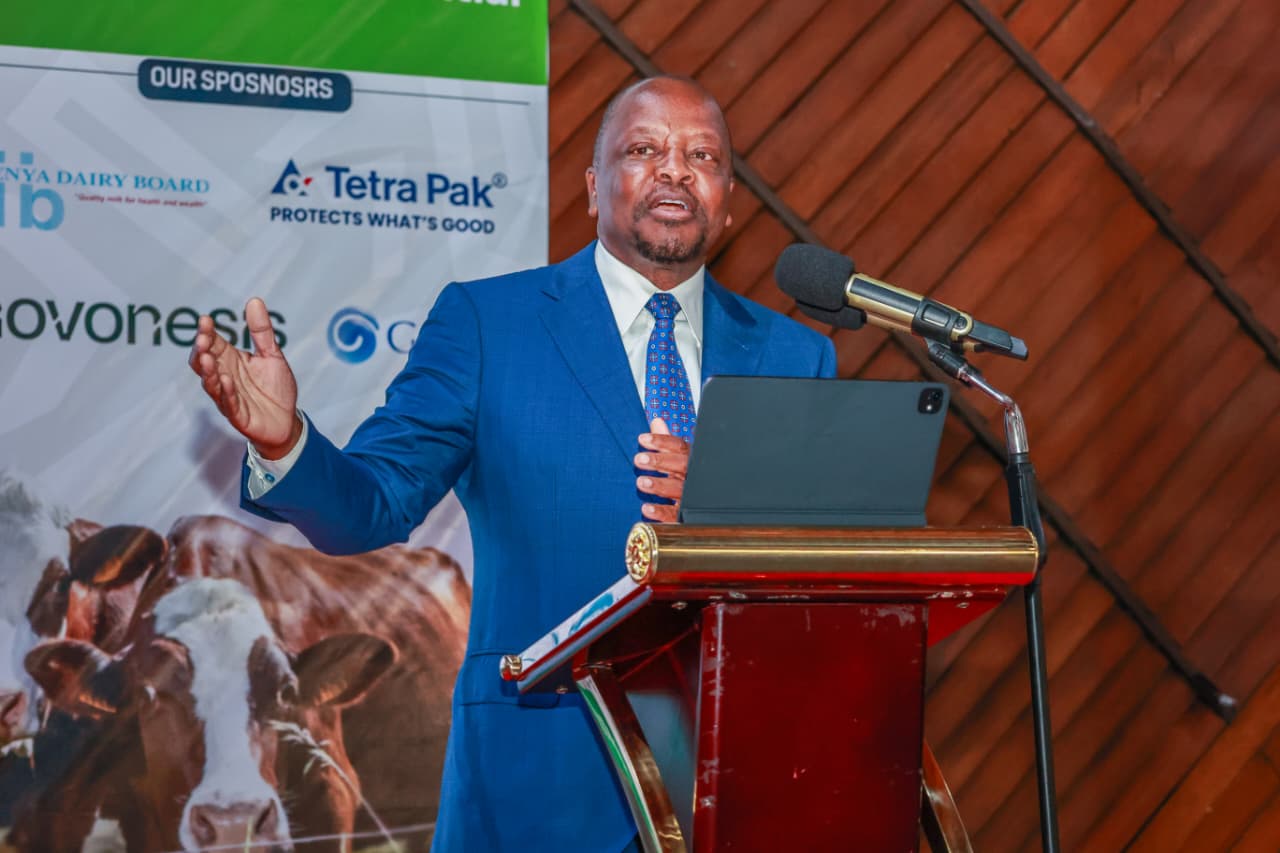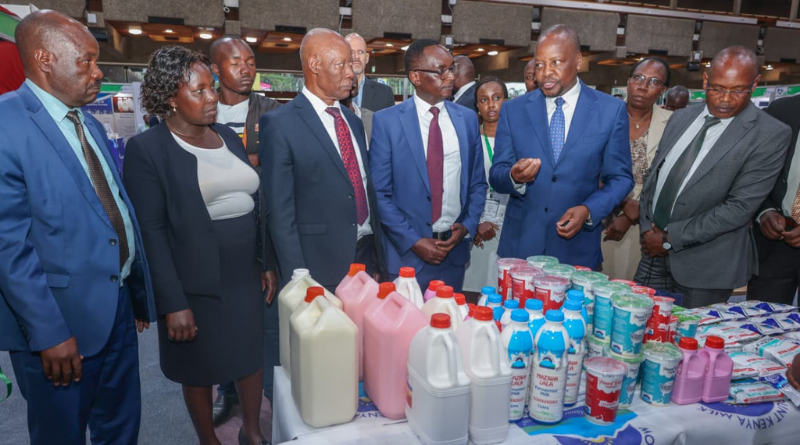Government steps up fight against aflatoxin in dairy feeds to protect milk markets
By Chemtai Kirui, NAIROBI,
The government has launched a renewed push to eliminate aflatoxin contamination in dairy animal feeds, warning that failure to act could jeopardize milk exports, public health, and quality standards.
Agriculture Minister Mutahi Kagwe announced the initiative at the opening of the African Dairy Conference & Exhibition (AFDA17) in Nairobi, a four-day forum bringing together policymakers, producers, researchers and traders from across the continent.
The government also unveiled a Good Quality Milk Certification Programme, which will pay premiums to farmers supplying safe milk and penalise those delivering substandard produce. Kagwe urged feed makers and farmers to use Aflasafe, a biological product that suppresses aflatoxin in maize.
“No dairy export without quality. Aflatoxin in maize feed passes straight into milk and locks us out of lucrative markets. If we are serious about doubling production and exporting, we must fix feed quality first,” Kagwe said.

Aflatoxin, a toxin produced by fungi that grow in warm, damp conditions, often contaminates maize, groundnuts and other grains. Research in Kenya, including an investigation into the 2004 Eastern Kenya outbreak and more recent research on aflatoxin in milk, has linked exposure to liver cancer and long-term health problems in children.
The first serious outbreaks of acute Aflatoxin poisoning were recorded in the early 1980s in Makueni, followed by a major episode in 2004 across eastern Kenya left 317 people sick and 125 dead after consuming contaminated maize.
Food safety scares tied to aflatoxin have since triggered recalls of maize flour in 2004, 2010 and 2019. Regulators warn the toxin remains a double threat because it passes into milk and meat consumed by humans.
The Kenya Agricultural & Livestock Research Organization (KALRO) has developed strains such as Aflasafe KE01, which reduce contamination in maize before it enters feed chains.
Kagwe urged farmers and feed makers to adopt such innovations to ensure milk safety and safeguard exports.
“Use aflatoxin-free maize. Adopt Aflasafe. This is the only way to guarantee the best milk for Kenyans and protect our place in global markets,” he said.
Kenya produced 5.3 billion litres of milk in 2024 and aims to double output in coming years under its Bottom-Up Economic Transformation Agenda. The Agriculture Ministry said tackling aflatoxin, lowering feed costs, improving cattle genetics and rewarding quality will be central to growth.
Kagwe also urged African countries to share best practices and harmonise dairy standards under the African Continental Free Trade Area (AfCFTA), saying the continent should not continue importing milk powders while sitting on vast production potential.
The push to curb aflatoxin contamination comes at a critical time for the sector, with the new certification scheme and premium model expected to lift standards while protecting access to export markets.




